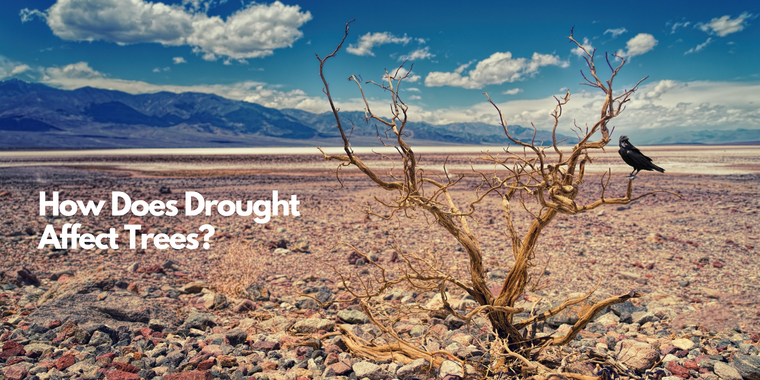
While drought may seem like a minor issue to those who live in regions with high annual rainfall, it can have devastating effects on the environment and ecosystems if left untreated. Drought affects trees by stressing them out so much that they lose their leaves, which can kill them if the drought persists.
If you’re wondering how drought affects trees, then keep reading to learn more about this phenomenon and its effects on our planet.
Click Here & Get Up to 3 Tree Service Quotes Now!
The Cause of Tree Damage During Drought
The single most important cause of tree damage during drought is water stress or a lack of water. When trees don’t have enough water, they begin to experience cellular dehydration. Water has many purposes in a tree, such as transporting nutrients from leaves to cells and providing space for water vapor which is vital to photosynthesis (the process used by plants to create food using light energy).
When a tree loses too much moisture from its leaves, it begins to lose function – without enough room for carbon dioxide (CO2) gas, and little energy production occurs in photosynthesis. Without photosynthesis and other essential functions, a tree will eventually die if not relieved of its shortage of water.
What Can Be Done to Save Trees in Arid Climates?
The world has been experiencing a lot of droughts in recent years. Some areas have had to deal with severe water shortages, while others have simply dealt with long periods of hot and dry weather.
One thing that’s certain is that drought is having an effect on trees around the world, as well as other plant life and animals. Humans can help combat drought in many ways, but one of them should be to study how drought affects trees so we can figure out what is causing problems for trees in arid climates.
If we know what affects their growth and health, we can focus our efforts where they are needed most. With a better understanding of what creates difficult conditions for trees, those who care about woodlands can seek to alleviate them. For example, by doing things like installing shade houses or building structures over large fields, people could protect plants from intense sunlight and heat.
By finding ways to lessen stress on these plants when there isn’t enough water available in their environment, we would be able to prevent tree loss as much as possible. We may even be able to halt it altogether or at least decrease it significantly compared to current levels.
Management Practices to Reduce Tree Loss During Droughts
A University of California (UC) study determined that properly managed trees are less vulnerable to drought and heat stress than unmanaged ones. Good management includes things like planting drought-tolerant species, pruning damaged branches to keep tree crowns open and healthy, mulching around trees to prevent moisture loss from transpiration, and fertilizing trees before a drought.
If you take care of your trees during normal growing conditions, they're much more likely to survive droughts, says Alexandra Syphard, one of UC Cooperative Extension's resource conservation specialists.
Tree maintenance should be part of an overall water conservation plan that can be implemented during dry periods as well as wet periods. It’s never too late or too early for good management practices!
Natural Resilience in Trees
If there’s a silver lining to droughts, it’s that they create natural resilience in trees. Even if your trees end up dying as a result of drought, you can see sprouts within just two or three years. Unfortunately, though, even natural resilience has its limits; once established droughts often last for decades. In fact, during at least four out of every five droughts around 20% or more of forest die-off occurs.
Fortunately, certain species of trees are much more drought-resistant than others—and fortunately, too, these species tend to be used most frequently for landscaping and forestry projects. By making sure your planting stock is native to local conditions and planting on better soil sites, when possible, you can help ensure survivability through tough times (though some plants will still die-off).
During extended periods of drought, water deeply only once per week, but pay attention so as not to overwater your plants and cause new problems. If possible, keep rain gauges on site so you know exactly how much water is needed each time; resist the urge to add extra just because the grass is green!
Landscapes built using drought-tolerant plants such as California's Ponderosa Pine are less likely to need irrigation in normal situations or provide enough shade for native animals in dryer areas. As always with drought-tolerant plants: proper site selection is key!
The Way Forward
This might seem like a simple question, but it actually cuts to a much more difficult one: How do we decide when an ecosystem has been damaged to a point that recovery is impossible?
According to The New York Times, for example, if Lake Mead's water level continues to drop as it is now—an additional 1.5 feet by next summer—water deliveries will be cut from 8.2 million acre-feet in 2014 to 5.5 million acre-feet in 2015. This would impact 38 million people in Arizona, Nevada, and California who rely on water from Lake Mead for household use.
1. Register your company
2. Create a searchable listing
3. Connect with more clients
